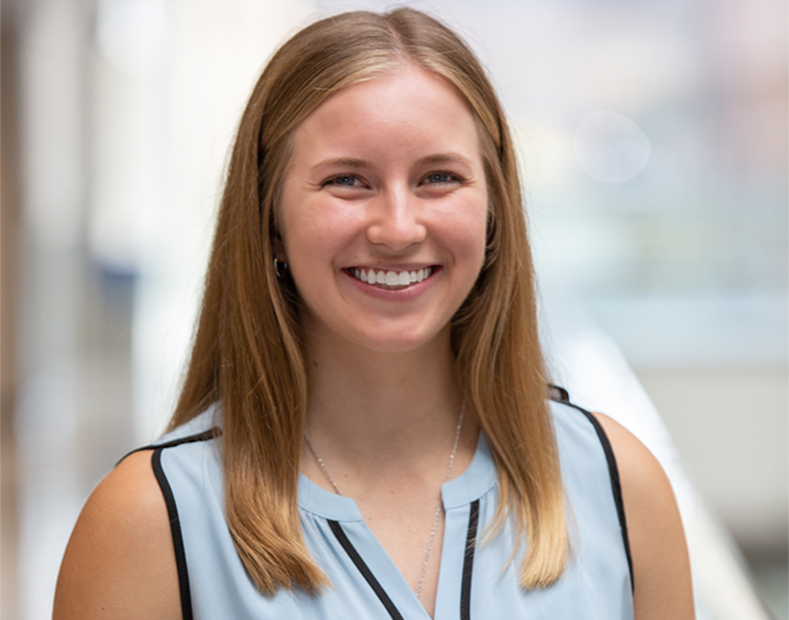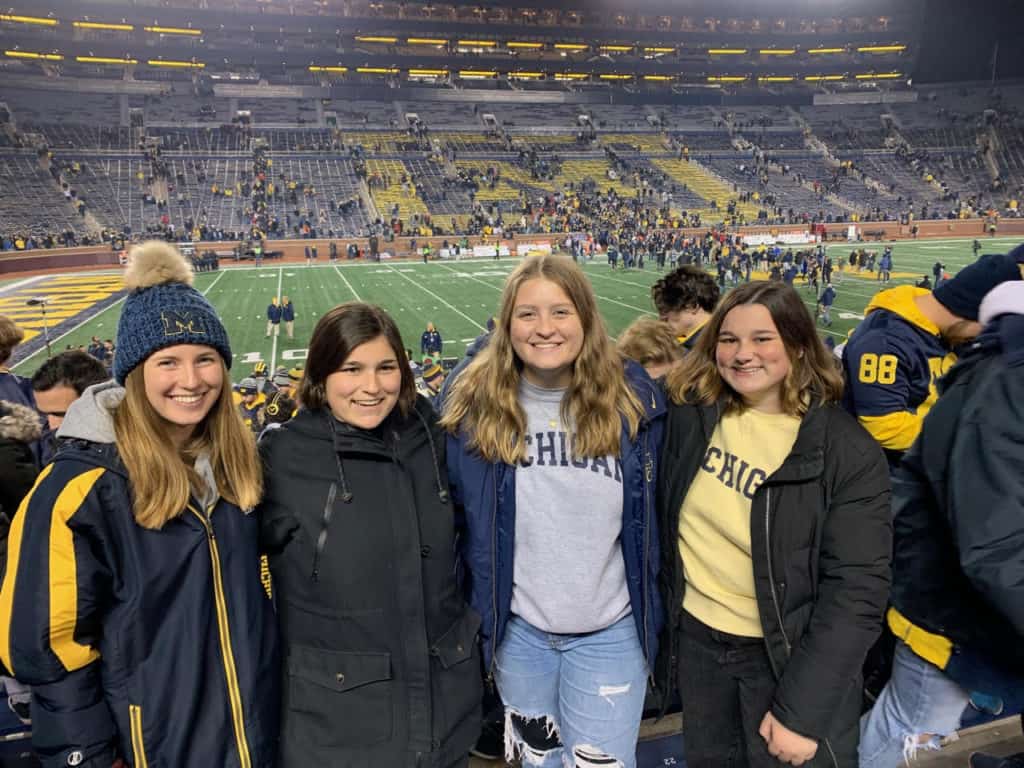
Student spotlight: Caroline Hirth
During Hirth’s time at U-M Industrial and Operations Engineering (IOE) she has contributed to finding solutions for real-world problems and systems within both Michigan Medicine and in Wayne County.

During Hirth’s time at U-M Industrial and Operations Engineering (IOE) she has contributed to finding solutions for real-world problems and systems within both Michigan Medicine and in Wayne County.
When undergraduate student, Caroline Hirth enrolled at the University of Michigan College of Engineering (CoE) she knew that she wanted to help people but wasn’t sure how to accomplish that life calling. In her time at U-M Industrial and Operations Engineering (IOE) she has contributed to finding solutions for real-world problems and systems within both Michigan Medicine and in Wayne County.
Finding her path
Unsure of what to pursue Hirth’s sister, who was also a student at U-M CoE, advised that she talk to U-M IOE Arthur F. Thurnau Professor and The Center for Healthcare Engineering and Patient Safety (CHEPS) Director, Amy Cohn.
“My view is that other engineering degrees are collaborative, but they’re collaborating with other engineers. Whereas, in IOE you have the opportunity to work with non-engineers. It’s cool because you get to bring a perspective that they don’t have.”
– Caroline Hirth
“It’s really cool to be able to look up to her [Cohn] and to see someone who has been able to get to a powerful position in her career, and to watch her use her expertise in IOE in a way that brings people together,” Hirth said. “That initial conversation that I had with her, was a very pivotal moment in me choosing this path.”
Cohn recommended that Hirth enroll in IOE 201 and 202. After taking those classes Hirth declared Industrial and Operations Engineering and joined CHEPS about a year later.
Helping people and making connections
“My view is that other engineering degrees are collaborative, but they’re collaborating with other engineers,” Hirth said. “Whereas, in IOE you have the opportunity to work with non-engineers. All of the clients in projects that I’ve been a part of have not been engineers; they’re pharmacists or investigators or something else. It’s cool because you get to bring a perspective that they don’t have.”
With help from CHEPS, Hirth has participated in three projects that have allowed her to help people and make a difference in a real-world context; two with Michigan Medicine and the last with the Wayne County Medical Examiner’s Office.
Impacting Michigan Medicine staffing

Every semester CHEPS students build a six-month schedule for a department in Michigan Medicine. The students start by collecting scheduling and time-off requests from the department head. This information is then put into a model that exports multiple solutions.
“Something that we can do better as engineers, is oftentimes we can have tunnel vision on an equation, or a technical tool, or model and we lose sight of what is realistic or what are the actual impacts that this will have on people,” Hirth said.
After careful consideration, students use their data to drive their decisions on selecting the best schedule to maintain proper work-life balance for all attendings in the department. Hirth is currently working on her third schedule.
“I really like this project because there’s a very specific deliverable that we have to hit,” Hirth said. “It’s a very rewarding feeling when you get to the end of the semester, and you know that it’s a specific tangible thing that they’re implementing in their department.”
Wayne County Medical Examiner’s Office
Hirth is also working with the Wayne County Medical Examiner’s Office to streamline the identification process of deceased individuals.
“We’re going in and looking for ways that they can update their systems because consequences are high when there is any lag time in identifying bodies,” Hirth said.
The students found several opportunities for optimization practices to be implemented, including optimizing the phone systems to take pressure off staff dealing with high incoming call volumes, as well as working on the staffing model itself.
“We’re looking to have a report to them by the end of the semester with our findings and recommendations and to start the process so future work can be done,” Hirth said. “We’re not going to solve all of the problems in one semester but we’re doing the foundational work.”

Women in STEM
Hirth joined Michigan Women in Science and Engineering Residence Program (WISE RP) during her first year at CoE as a way to meet other women in STEM. This group provided her with a community of people to talk with, but she has still faced struggles along the way.
“My main challenge during college, as a woman in STEM, is not external,” Hirth said. “It wasn’t anyone treating me poorly, but it was internal, and it was me having doubts about myself or my capabilities. I think imposter syndrome is really common with women in STEM.”
Hirth urges other women to remember all the accomplishments that they’ve reached when they’re experiencing self-doubt.
“Diversity is so important, so no matter who you are, just the fact that you’re bringing your thoughts to the table is valuable, and you’re adding something by doing that.”
– Caroline Hirth
“Remind yourself of your achievements and of the things you have accomplished,” Hirth said. “Diversity is so important, so no matter who you are, just the fact that you’re bringing your thoughts to the table is valuable, and you’re adding something by doing that.”
Next steps
Hirth has been accepted into the U-M IOE Master’s program through SUGS, and plans to start in fall 2022.
“I could see myself going into healthcare operations or something in that realm. I like going out and working with people, so I definitely want that to be a part of my future career.”